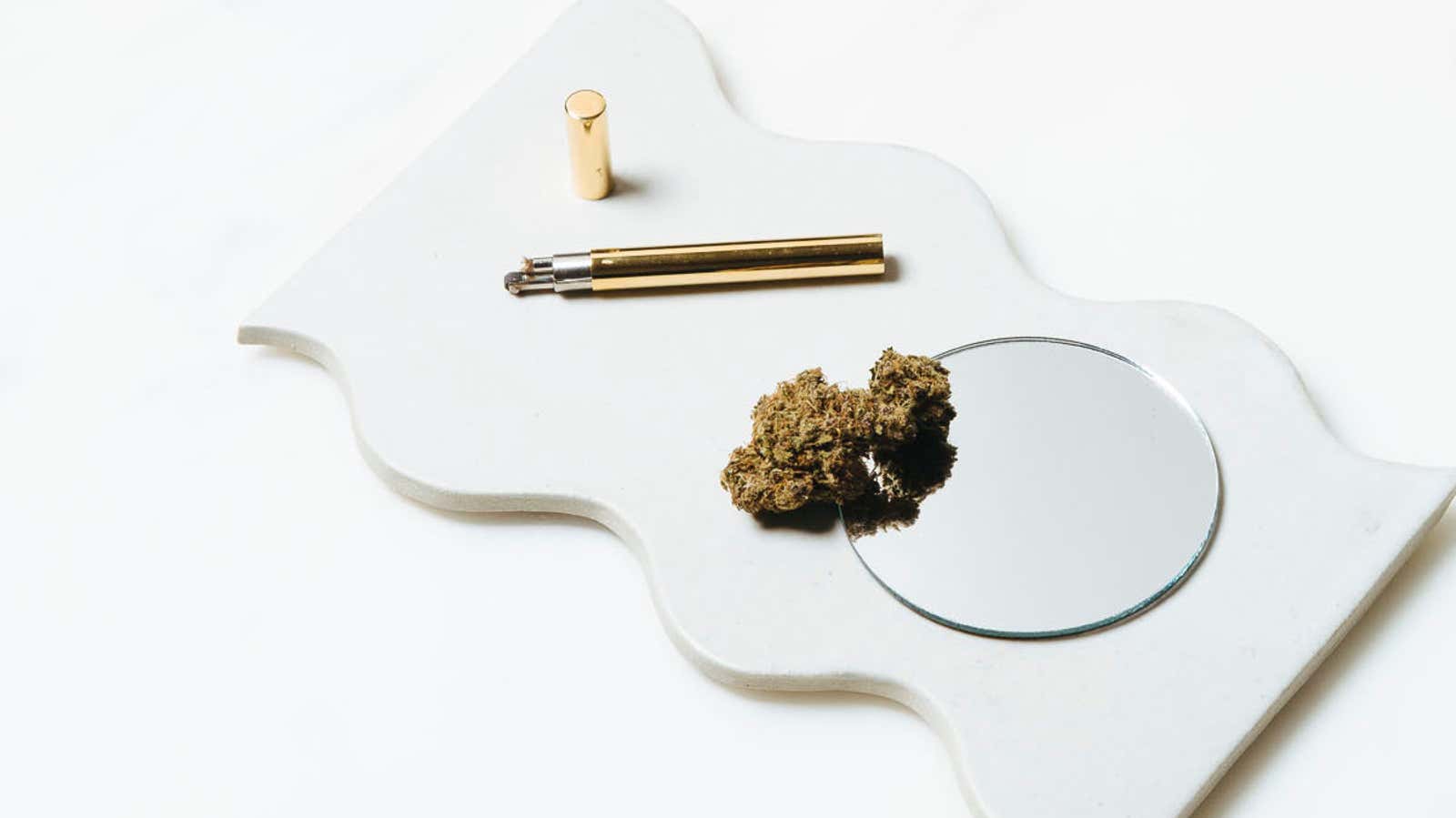Does CBD Work Better When Combined With THC?

Cannabidiol, commonly known as CBD, is widely available. You can find it in various forms, not only in dispensaries, but also in grocery stores, cafes, cocktail bars and other establishments hoping to capitalize on this trend.
And while there is still not a lot of scientific evidence to back up this hype, many people swear by its anti-anxiety effects, and some prefer products that contain THC.
Do you need THC at all?
In an email conversation I had with Kami Noeker, founder of Serra Dispensaries , she explained that the two compounds can have very different effects. “THC and CBD are two of the main cannabinoids found in the cannabis plant,” she explained. “The most important difference between the two is that CBD alone won’t get you high.” “THC,” she continues to explain, “is the main psychoactive component of cannabis,” which gives you the “traditional” high “associated with cannabis.”
But according to Noeker, “CBD is much more effective when combined with THC,” for which we can thank what is called the ” entourage effect .” “Basically,” she explained, “the two components of a plant, when combined, interact in our bodies in a way that has a stronger effect. When you consume CBD with a small percentage of THC, CBD will do its job better in your system, providing you with the best effects. “
Adding CBD can also improve your THC experience. In an email correspondence with Andrea Sparr-Yasva, Director of Education at Farma , she explained that CBD can help those dealing with anxiety in two ways. “Supplementation with CBD can help mitigate negative outcomes and maintain body concentration and reduce cerebral anxiety. Conversely, a CBD-rich product with minimal THC may be exactly what they need, especially if they want to treat symptoms without intoxication. A small amount of THC will allow CBD to work more effectively at lower doses, but the goal is always to find the lowest dose that delivers the therapeutic benefits you need. ”
Let’s talk about numbers
If you’ve ever researched a huge number of inhalants and CBD foods in a dispensary, you’ve most likely seen “1: 1” and “2: 1” written on the packaging, and maybe even “10: 1” and “3: 1”. These numbers indicate the relative amounts of the two compounds, with the first number usually representing the amount of CBD. (Although Noeker was quick to point out that you should always double check, as this is “not standardized across all brands.”)
In a subsequent email she sent me, Sparr-Yasva explained that from a standardization point of view, she believes that “THC should always be listed first.” “Even if it’s less than CBD,” she explained. “Everything else is just confusing and inconsistent. If CBD is listed first only when it is dominant, you will have to state it every time. And buyers have to figure it out every time. Unfortunately, I don’t think this mislabelling will go away anytime soon. “
As you would expect, the higher the CBD, the less the psychoactive effect. According to Sparra-Jaswa, “CBD can also help mitigate negative outcomes by preventing THC from binding just as tightly to receptors and keeping the body’s concentration much more focused than cerebral stimulation.” Although I had one buddy who told me he could take 2: 1 (CBD: THC) and “still go about his day and do business,” anecdotal evidence I heard from some of my connoisseur friends cannabis indicate that this is definitely not the case for everyone. On the other hand, a 1: 1 ratio means you have an equal amount of both connections on board, which can give one traditional – albeit quieter – buzz without as much (or any) anxiety or paranoia that they usually get. … deal with when consumed in a pot.
However, as with any new substance, it is important to make CBD easier to use, especially when combined with THC. While CBD is “non-psychoactive,” there is always a chance you may not like the way you feel. “Ultimately,” explained Sparr-Jaswa, “the ‘start small, go slowly’ mantra must be conveyed because a low dose for one person can be a high dose for another. Even a person who consumes large amounts of inhalants can be food sensitive, ”so do not rush to make any changes to your cannabis consumption.
What about a latte?
Living in Portland, Oregon means I’ve seen CBD added to every edible and drink you can think of, from kombucha to cocktails, but it’s not the CBD you get in dispensaries. According to Dockner, “The CBD that is sold outside of dispensaries is not sourced from the actual marijuana plant; you get CBD from another source like hemp, or CBD artificially created in a laboratory. While all CBDs are not psychoactive by themselves, it is very important to remember that not all CBDs are created equal and you need to know where your CBD comes from. “
If you’re not sure where CBD comes from, just ask. “There are some amazing hemp-derived products in the mass consumer market,” Docner explained, “but it’s important to know which source of CBD in the latte [from] and what the concentration of CBD is to make sure you’re not selling snake oil.” So order a CBD cocktail if you like it, but don’t be discouraged if you feel exactly the same as enjoying your regular, boring hemp-free drink. (A regular cocktail is still fine.)
Edited on 4/20/19 3:24 AM EST: Post updated to clarify Andrea Sparr-Yaswa’s role in Farma and add a note on how THC: CBD ratios might display on packaging.